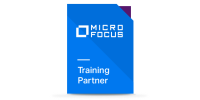Additional information
| Prerequisites | To be successful in this course, you should have the following prerequisites or knowledge:
|
|---|---|
| Difficulty level | |
| Duration | 5 days |
| Certificate | The participants will obtain certificates signed by Micro Focus (course completion). This course prepares you also for such related Micro Focus certification exam: ALM120E-125 - Application Lifecycle Management Essentials 12.5 ASP EXAM |
| Trainer | Authorized Micro Focus Trainer |
Other training Micro Focus | Application Lifecycle Management
-

ALM350 - Application Lifecycle Management Site and Project Administration training Micro Focus
-

ALMOCT110 - ALM Octane Fundamentals training Micro Focus
-

SLK400 - Silk4Net Scripting Essentials training Micro Focus
-

SLK410 - Silk4Net C# Scripting Essentials training Micro Focus
-

SLK420 - Silk4J Scripting Essentials training Micro Focus
-

SLK430 - Silk Test Workbench Essentials training Micro Focus
TRAINING PRICE FROM 2060 EUR
In order to propose a date for this training, please contact the Sales Department

